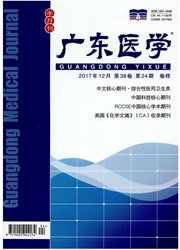

 中文摘要:
中文摘要:
目的比较来源于大鼠内脏组织与皮下组织的脂肪源性干细胞体外的成骨潜能。方法来源于大鼠不同解剖部位(内脏组织和皮下组织)的脂肪被分离消化,并向成骨方向诱导。CCK-8法测定两种不同来源干细胞的增殖情况,碱性磷酸酶、VonKossa染色观察细胞成骨能力的变化。结果两种细胞均保持较强的增殖能力,生长曲线呈“S”型,但皮下脂肪源性干细胞的增殖能力明显高于内脏脂肪源性干细胞。成骨能力检测显示内脏脂肪源性干细胞的碱性磷酸酶、VonKossa染色阳性更明显,碱性磷酸酶定量检测活性更高。结论不同解剖部位的脂肪组织成骨能力各有不同。内脏组织脂肪源性干细胞的成骨潜能要明显高于皮下组织来源的。
 英文摘要:
英文摘要:
Objective To compare the osteogenic potentials of adipose - derived stem cells from visceral and sub- cutaneous adipose of rats. Methods Different adipose - derived stromal cells were isolated from rat visceral and subcuta- neous adipose tissues by enzymatic digestion, and subsequently induced into osteogenic lineage. The proliferation potential was assessed by CCK -8, while the osteogenic potential was compared by ALP and van Kossa staining assessments. Re- sults Stong proliferative abilities were both observed in the two cells, with S - shaped growth curves. Although a signifi- cant stronger proliferative activity was revealed in subcutaneous adipose - derived, significantly stronger positivity of alka- line phosphatase and yon Kossa staining, as well as higher activity of alkaline phosphatase was revealed in visceral adipose - derived cells (P 〈 0. 05). Conclusion The visceral adipose - derived cells present higher osteogenic potential than those isolated from subcutaneous tissues.
 同期刊论文项目
同期刊论文项目
 同项目期刊论文
同项目期刊论文
 期刊信息
期刊信息
